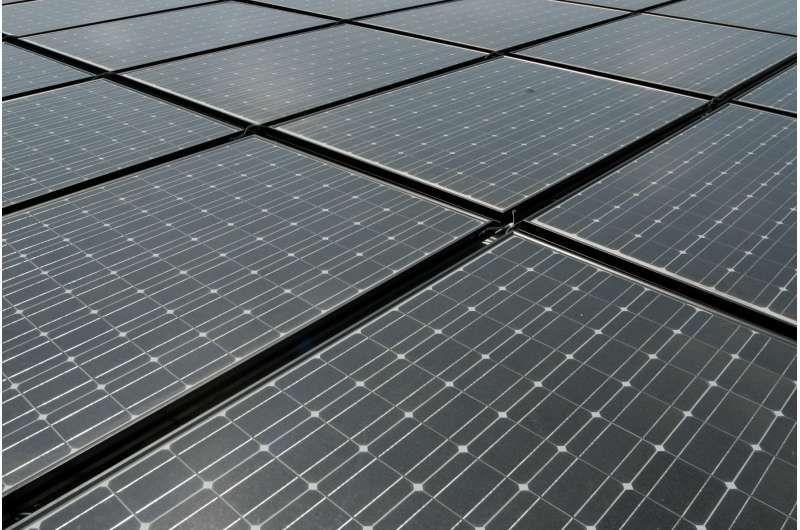Research improves solar cell performance

The team at SPECIFIC Innovation and Knowledge Centre at Swansea University's College of Engineering investigated Cu2ZnSn(S,Se)4 (CZTS) which is based on Earth-abundant-elements, has shown great potential as an alternative to conventional Cu(In,Ga)Se2 (CIGS) in solar cells. The power conversion efficiency of CZTS-based solar cells has reached 12.7%, but there is still room for improvement to compete with the 22.3% record of CIGS technologies.
Several physical mechanisms have been proposed to explain this efficiency gap, including interface losses, electrostatic or bandgap fluctuations, and defect-driven recombination. The existence of secondary phase materials at the pn-junction interface could lead to one or more of the above energy loss mechanisms.
Secondary phases such as Cu2SnS3 or SnS—having a low-bandgap at the interface—can cause a decrease in open circuit voltage, while ZnS—with high bandgap—can act as a photocurrent barrier and is usually responsible for a high series resistance.
The team investigated the effect of these phases by etching CZTS samples for different durations using an aqueous Na2S solution. They used a Renishaw inVia confocal Raman microscope to characterise the samples, by both Raman spectroscopy and photoluminescence. The Raman measurements provide chemical and crystallographic information about the material; in this case the ratio of SnS to CZTS, which showed a clear reduction after etching.
The team said: "Raman spectroscopy is a powerful technique to identify a number of CZTS and secondary phases at the surface, which could provide essential feedback for the optimization of process parameters and film growth"
"Raman mapping is used to rapidly gather comprehensive 2-D distribution of crystalline phases, which could play a significant role in monitoring absorber film quality during industrial production."
Further characterisation using photoluminescence spectra showed improvement of the materials' optical properties after they had been etched, indicating that the process had improved the materials' performance.
The team said: "These results enable us to quickly determine the best etching parameter and further help us to apply the most suitable etching in device fabrication of CZTS solar cells. Future studies will focus on exploring the links between Raman-mapping and solar cell-performance within CZTS solar cells."
The research team comprises of Dr Zhengfei Wei, Mr Michael Newman, Dr Wing Chung Tsoi and Dr Trystan Watson.
The full study is published in Applied Physics Letters
More information: Zhengfei Wei et al. Raman mapping analysis for removal of surface secondary phases of CZTS films using chemical etching, Applied Physics Letters (2016). DOI: 10.1063/1.4963134
Journal information: Applied Physics Letters
Provided by Swansea University





















